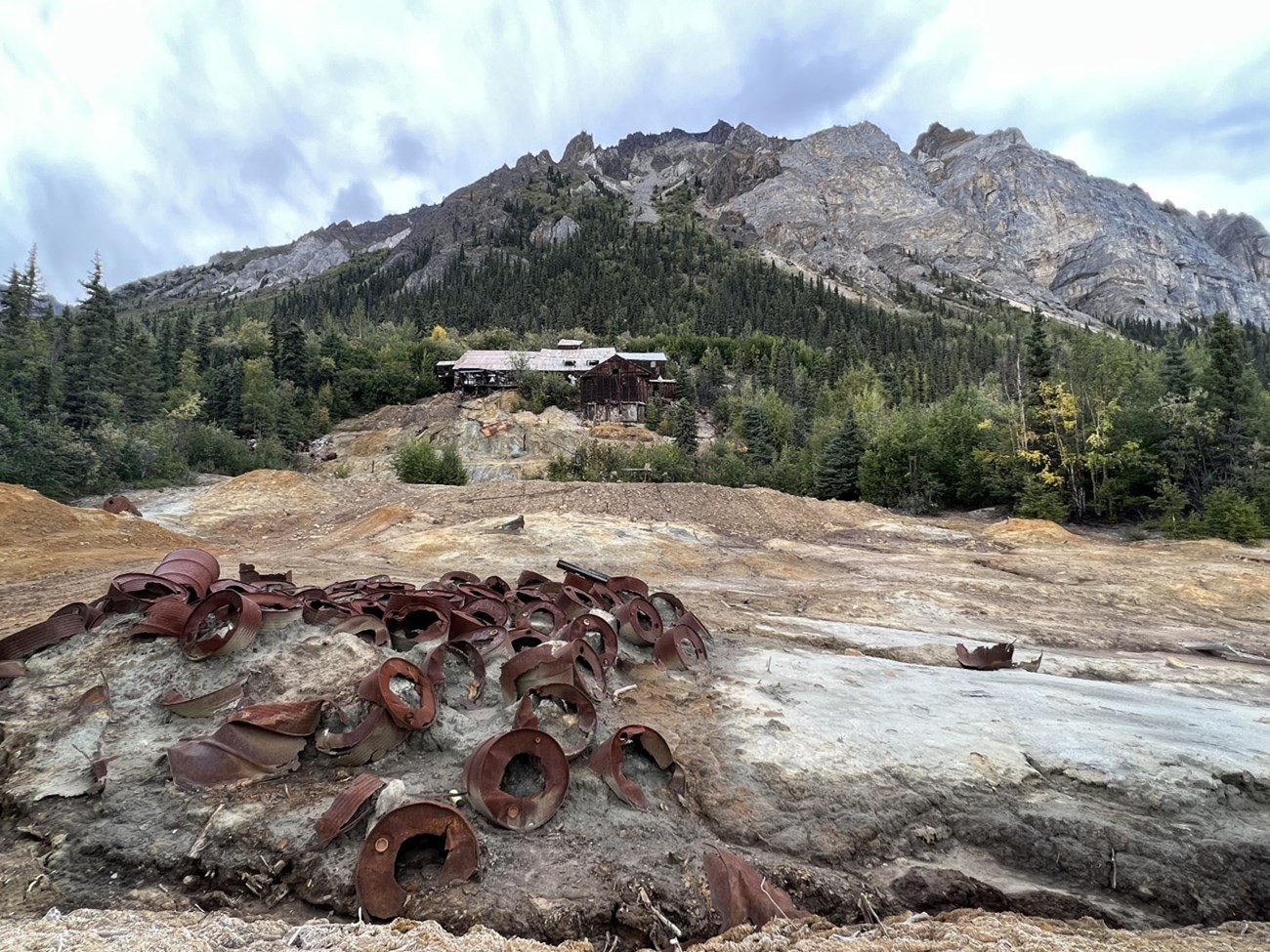
NPS Site BackgroundWrangell-St. Elias National Park and Preserve is the largest national park in the U.S. Located in eastern Alaska, this 13.2-million-acre park includes nine of the country’s 16 highest peaks. The Park was established in 1980 and contains private property within the Park’s boundaries, including portions of the Nabesna Mine Site. Gold and silver were mined and milled at the site between 1925 and 1940. A total of about 53,400 ounces of gold was produced by 1940. An area of 330.6 acres, including 19 of the buildings, has been listed on the National Register of Historic Places as the Nabesna Gold Mine Historic District since 1979. The mine, mill, and some of the associated mill tailings are located on the Sunshine Lode mine claim, patented by the Nabesna Mining Company. Mill tailings, which are the waste left over after the milling process, and associated contaminated soil, are located over an area of approximately 12.5 acres with average thicknesses of 1 to 2 feet. It is believed their current distribution was the result of an impoundment structure failure. The remainder of the tailings have migrated in part off the privately-owned patented mining claim onto land east and west of Nabesna Road that is managed by NPS. The Site is located below the mill building and consists of deposits of mill tailings upslope (Upper Tailings) and down slope (Lower Tailings) of the Nabesna Road. Approximately 70 percent of the tailings are located on land owned by the United States and managed by NPS. The iron-rich surface of the tailings has oxidized. It appears as a bright orange and red packed crust with localized gray areas of unoxidized pyrite where the tailings have been disturbed.
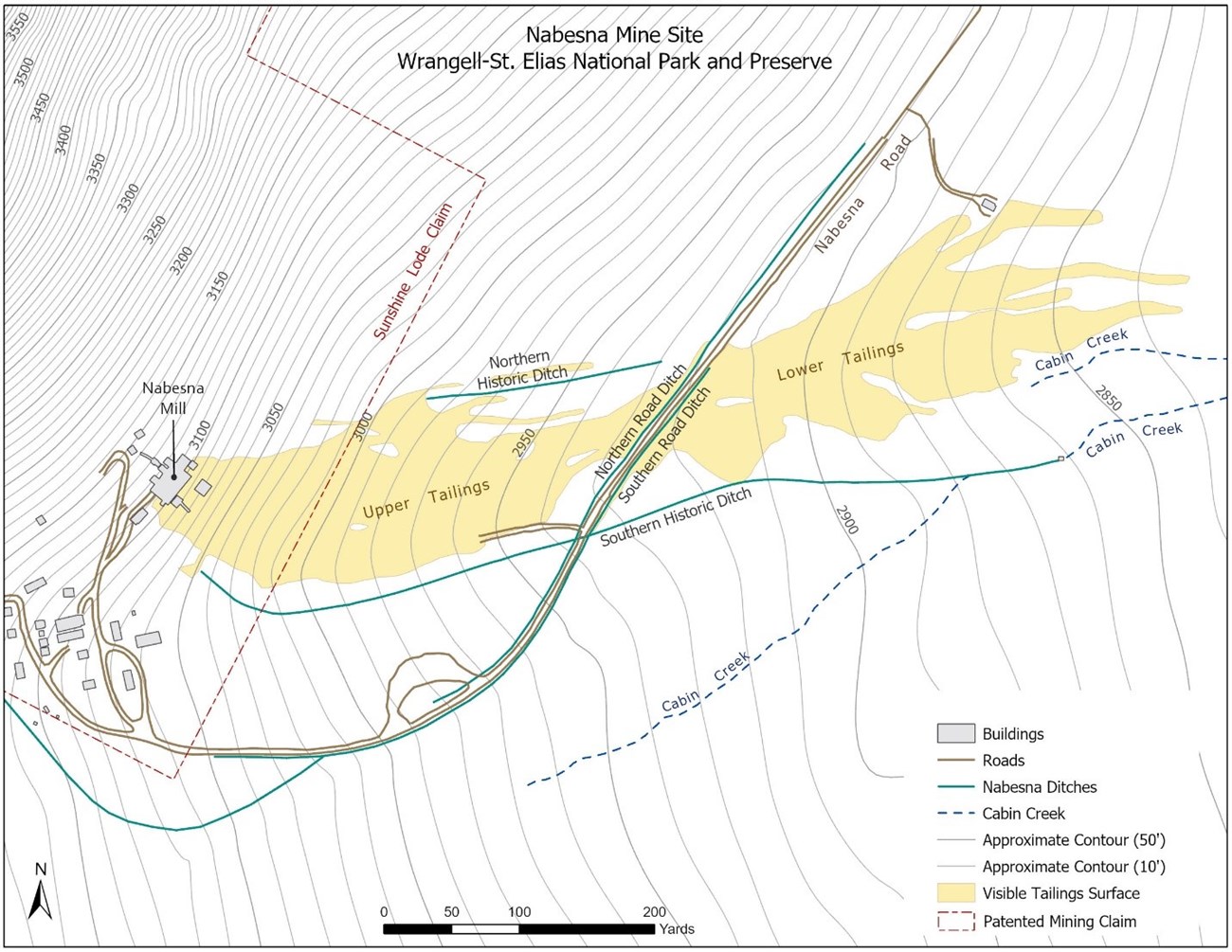
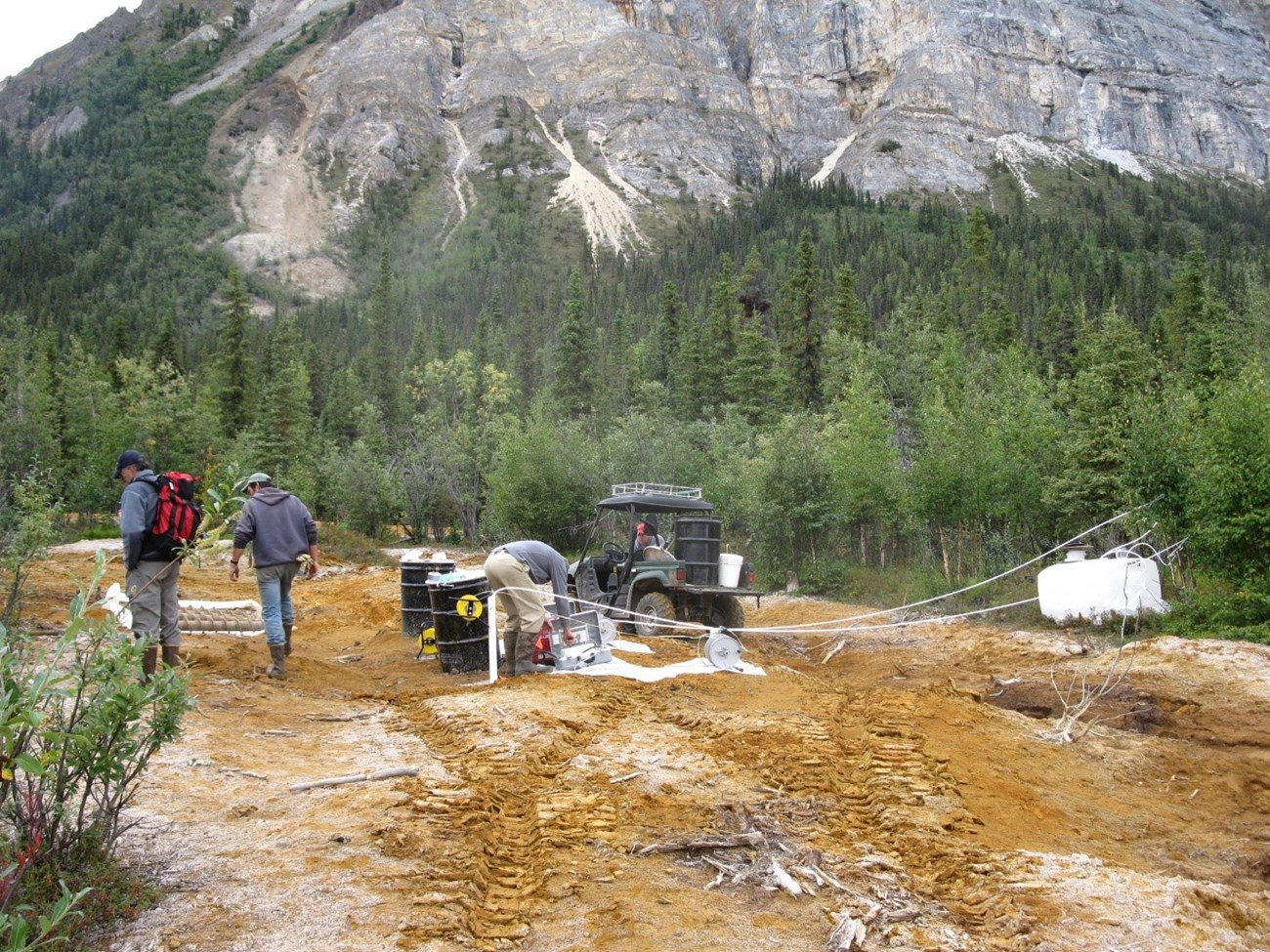
NPS Environmental InvestigationsMultiple environmental investigations have been conducted at the Nabesna Mine Site since 1981, which have focused on delineating and evaluating the mill tailings. Multiple metals have been identified as contaminants of concern in soil, surface water, and sediment. The primary human health and safety concern is arsenic in soil and tailings. Other contaminants may pose unacceptable risk to the environment, including aluminum, arsenic, barium, cadmium, cobalt, copper, cyanide, iron, lead, manganese, nickel, selenium, silver, thallium, vanadium, and zinc. In 1995, the EPA contracted for a Site Inspection of the Nabesna Mine Site with the objectives of assessing inorganic compounds, cyanide, pesticides, polychlorinated biphenyls (PCBs), and semi-volatile organic compounds in soils, and inorganic compounds and cyanide in the surface water and sediments. Between 1994 and 1997, the United States Geological Survey (USGS) conducted environmental geochemical investigations in select mineral deposits in the Park in order to determine baseline levels of selected elements and to determine the extent of possible environmental hazards associated with mined areas. The Nabesna Mine Site was one of the areas studied. In 2009, The Johnson Company conducted a Supplemental Site Investigation (Nabesna Mine Site Community Fact Sheet, February 2010 Update) on behalf of NPS.
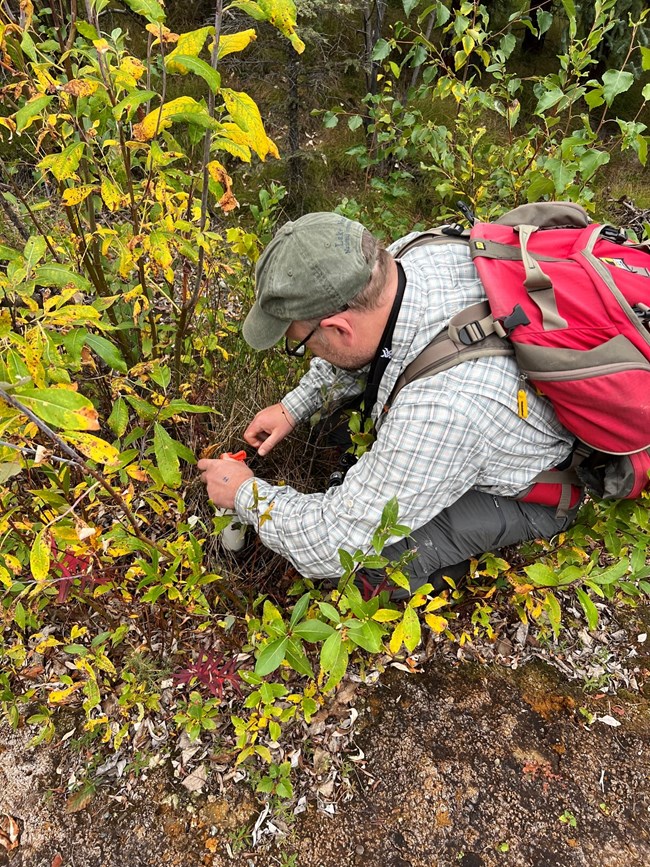
NPS Previous Response ActionsAs a result of elevated metals concentrations in Cabin Creek, NPS and the US Army Corps of Engineers implemented interim response measures in 2004 to redirect surface water flow away from the Lower Tailings in order to reduce the input of metals into Cabin Creek. The historic ditches were re-excavated, and new ditches were constructed parallel to the Nabesna Road. Current InvestigationThe NPS is conducting an Engineering Evaluation/Cost Analysis (EE/CA) at the Nabesna Mine Site under the authority of the Comprehensive Environmental Response, Compensation and Liability Act (CERCLA). The EE/CA process includes environmental investigations, as necessary, risk assessment, analysis, and evaluation of cleanup action options for contaminants that pose a risk to human health and the environment. The mill tailings are the focus of the Nabesna Mine Site EE/CA. In an EE/CA, cleanup actions are referred to as “removal actions.” The recommended removal action will ensure that site conditions are protective of human health and the environment. The process results in the publication of an EE/CA report, in which NPS will identify its recommended removal action alternative and seek public review and comment on the preferred option. The data used to create the EE/CA for the Nabesna Mine Site is being compiled from previous environmental investigations. (See Environmental Investigations section above). 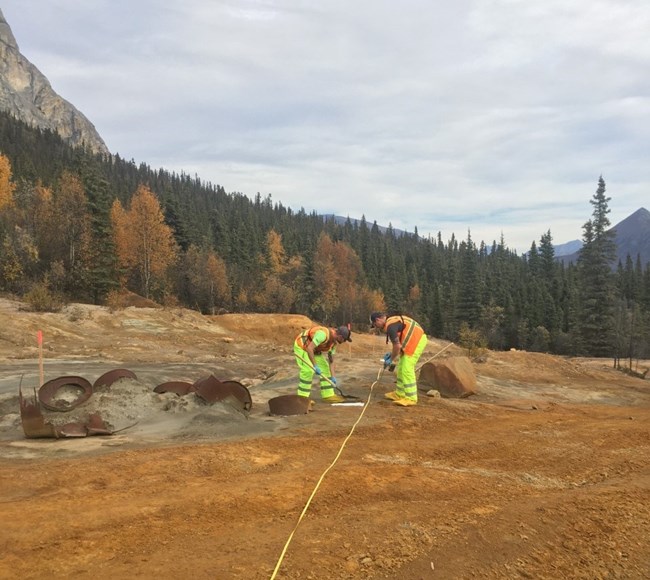
NPS CERCLA and NPS AuthorityNPS is authorized under CERCLA to respond as the Lead Agency to a release or threatened release of harmful substances and/or a release of any pollutant or contaminant that may present an imminent and substantial danger to public health or welfare on or from land under the jurisdiction, custody or control of the NPS. CERCLA provides a thorough site investigation and cleanup framework that can take many years to complete. Additional information regarding the CERCLA cleanup process can be found at the EPA website: https://www.epa.gov/superfund/superfund-cleanup-process. All contaminated sites located on lands under NPS jurisdiction go through four phases of cleanup. Each phase of cleanup has specific requirements and milestones based on CERCLA (or the applicable authority). At the Nabesna Mine Site, cleanup phases and milestones are based on CERCLA and its implementing regulations documented in the National Contingency Plan (NCP). The NCP establishes the structure for responding to releases and threatened releases of hazardous substances. Enabling meaningful community involvement throughout the investigation, selection, and implementation of cleanup activities is an ongoing activity and requirement that reaches across all phases of the NPS Cleanup Framework. The NPS approach and key milestones for investigating and cleaning up the Nabesna Mine Site are listed below.
Phase Activity
CERCLA Milestones
Phase Activities
CERCLA Milestones
Phase Activities
Anticipated CERCLA Milestones
Phase Activities
Anticipated CERCLA Milestones
Next StepsThe EE/CA report will identify NPS’s recommended removal action. Once the draft EE/CA report is complete, it will be released for public comment. NPS will consider and respond to public comments and prepare an Action Memorandum, the decision document that selects NPS’s preferred removal action alternative. Community InvolvementCommunity Involvement is a very important aspect of the CERCLA process. Community involvement ensures that the members of the public affected by a site undergoing investigation and cleanup under CERCLA, such as the Nabesna Mine Site, have a say in the process; a right-to-know what the agency-- NPS -- is doing to address the contamination; and provide input into the decision-making process. Early and meaningful communication with affected community members is the goal of the community involvement process, which occurs throughout the lifecycle of the NPS Cleanup Framework. The Community Involvement Plan (CIP) is a resource to enable meaningful community involvement. It serves as a guide for the NPS to inform and engage community members, government officials, the media, and other interested parties in the environmental investigation and cleanup activities at the site. As such, it is a living document that is updated and revised as appropriate, as site conditions and events change. The ways in which the NPS encourages communication with the public are described in detail in the CIP. The CIP and other documents that will be considered or relied upon in the selection of a response action to address the contamination at the site are part of the Administrative Record File.
Administrative Record File, Nabesna Mine CERCLA documents:
|
Last updated: February 27, 2024
